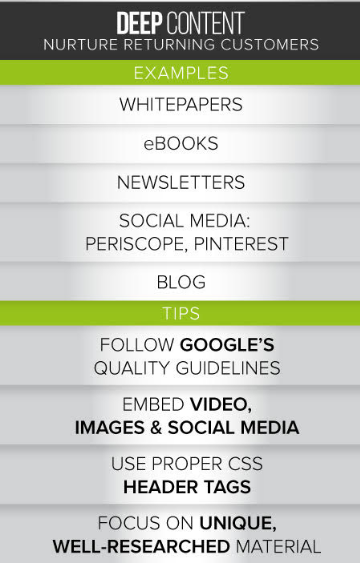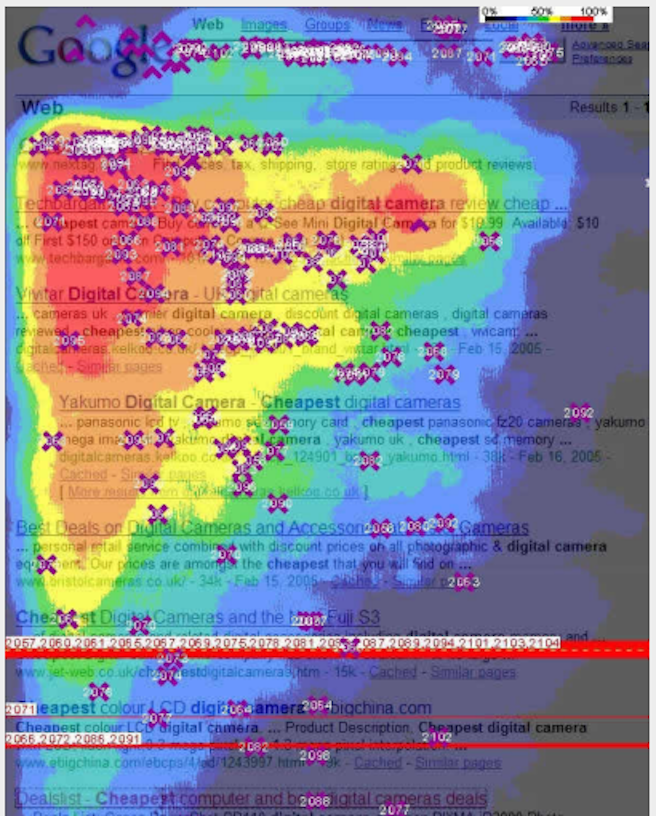If topic-mapping, research, creating a voice, drafting, editing and publishing weren’t enough of a challenge for any marketer, optimizing your written content’s length is another struggle that can drastically affect the value of your online presence. Knowing whether to go deep into a topic or stay wide can streamline your writing process and make your content more effective for the right audience.
Fifty-five percent of viewers spend 15 seconds on your site, and even fewer will actually read all of the content that you publish. Making first impressions is crucial, especially since some studies have found that it only takes users two-tenths of a second to cast their opinion of a website. Your task is to create content that is engaging enough for someone in search of your general service to find you and, more importantly, remember you. For readers further in your sales funnel, who have already expressed interest in your offering, deep content will help to nurture your relationship.
Your goal as a marketer is to expose your quick, concise material to people who just found your site, while strengthening your relationship with returning visitors by using longform, deep content.
Benefits of wide & deep content
Staying wide
- SEO – Attract people by using diverse keywords and topics that target what they’re looking for. Producing broader content will help you rank higher in search for readers higher in the funnel.
- Viral – Appealing, digestible content is highly sharable.
- Lead generation – Wide, diverse content with the long-tail approach more effectively attracts and captures new prospective buyers.
Going deep
- Lower-funnel leads – In-depth content helps to push prospective buyers through the funnel, warms them up to your services, and assures them that they’ve come to the right website.
- Return destination – The more detailed and specific your content keeps existing audience members engaged, and strengthens your relationship with them.
- Thought leadership – Your in-depth assets reassure your returning visitors that you are the authority in your space.
- Quality leads – Your deeper content helps to filter out unqualified leads, leaving you with those who are most likely to make a purchase.
Media, patterns & tips
Going deep
Your content should be sufficient enough to help lower your dependency on advertising by organically advancing your returning visitors through your sales process. When potential customers are ready to make a decision, your assets will be on their radar, and should help guide them to your products or services. Providing specialized material brings these deeper-funnel readers back to your site to learn more.
Where does in-depth content work best?
- Newsletters
- Whitepapers
- eBooks
- Longform blogs
- Social media: Periscope, Pinterest
Staying wide

Front load as much information as you can, even if your word-count is below 500. People higher in the funnel are more likely to be browsing, so keeping their attention is crucial.
The more you know about how users read and skim, the better fitting your content can be. Many users scan a page in a Z-shape, often starting on the upper-left corner. They’ll read the written content in an F-shaped pattern, and bold intro paragraphs overwhelmingly increase the likelihood of audiences reading the full story. When possible, bulleted or numbered lists can help keep quick-reading scanners engaged.
Google’s eye-tracking studies show that the first two search results receive the overwhelming amount of action. A marketer’s goal, in the age of Google’s Knowledge Graph, is to create content that is relevant, keyword-rich and broad enough to be featured in the top results for as many searches as possible, but be more in-depth (even at 300 words or less) than the competing carousel of information at the very top of the SERP.

Where does wide, broad content work best?
- Infographics
- Brief, frequent blog posts
- Podcasts
- Social media: Facebook, Twitter, YouTube
Is there an optimal length?
Not sure whether to cover all bases or to dig deep into a particular topic? Kevin Delaney, editor in chief of Quartz, a news agency, theorizes that: “The place between 500 and 800 words is the place you don’t want to be because it’s not short and fast and focused and shareable, but it’s not long enough to be a real pay-off for readers.”
However, at Brafton, we’ve found that content marketing works differently than journalism. Breaking news publishers are often concerned with striking while the iron is hot, to get the news out as quickly as possible at the expense of word-count. We balance word-count with overall length by including dynamic content such as pictures, screengrabs, video and embedded social media. A 650-word article, fleshed out with complimentary media, performs well on search engines because length doesn’t always correlate with word-count in terms of effectiveness. The user experience plays a major role, since a large component of Google’s algorithm is based on user intent, social shares and, of course, inbound links.

Different tactics, writing styles, and publishing options should be used to get your content to the right people. If you SEO-optimize your longform, deep-digging assets in the same way that you would with your quick-reading short content, you run the risk of alienating reader. New users, who might have been drawn in with wide content, might unintentionally find you via your in-depth material but bounce away from the site, overwhelmed by its depth. Conversely, marketers often accidentally scare away middle-funnel readers by promoting and publishing content that is better suited to first-time Googlers looking to learn the basics about your industry.




